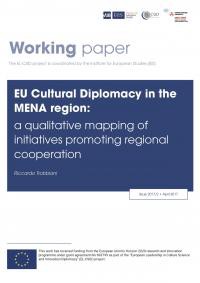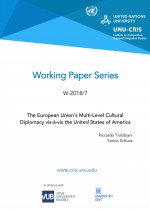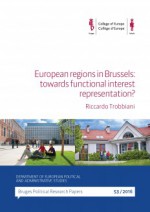EU Cultural Diplomacy in the MENA Region: A Qualitative Mapping of Initiatives Promoting Regional Cooperation

Drawing upon the analytical tools defined in the inception paper for Work package 5 of the EL-CSID project, this paper assesses the willingness, capacity and acceptance sustaining EU broadly-defined Cultural Diplomacy (CD) in the MENA region. The resulting qualitative mapping focuses on policies and initiatives which foster regional cooperation, both around the Mediterranean and among southern countries. The use of cultural tools in EU relations with the Arab world and Israel has received widespread commitment, based on its potential to foster peaceful relations, create opportunities for development and possibly lead towards a convergence of civilisations. The EU and its partners have started to create the conditions for CD initiatives to take place within most regional and inter-regional fora for cooperation with the MENA. This is true within the Euro-Mediterranean partnership, although resources are still insufficient and rely on short-termed instruments. Even more needs to be done to endow the recent political commitment to EU-GCC, EU-Maghreb and EU-LAS cultural cooperation with actual tools for action. Post-Arab Springs MENA countries constitute a fertile ground for EU CD initiatives, despite the difficulties presented in some of them by non-cooperative stances of national authorities and restrictive cultural policies. In this context, the EU is adopting an approach valuing capacity building, intercultural dialogue and people-to-people contacts instead of pure display of European culture(s), but it still needs to clearly define what the use of the term Cultural Diplomacy means in its particular case. More specifically, a regional strategy for Cultural Diplomacy in the MENA is still missing.
Kingah, S., Amaya A. B. and Van Langenhove, L. (2016) ‘Requirements for Effective European Union Leadership in Science and Cultural Diplomacy on (Inter) Regionalism in the South’, UNU-CRIS Working Paper W-2016/3, http://cris.unu.edu/sites/cris.unu.edu/files/W-2016-3%20paper.pdf


